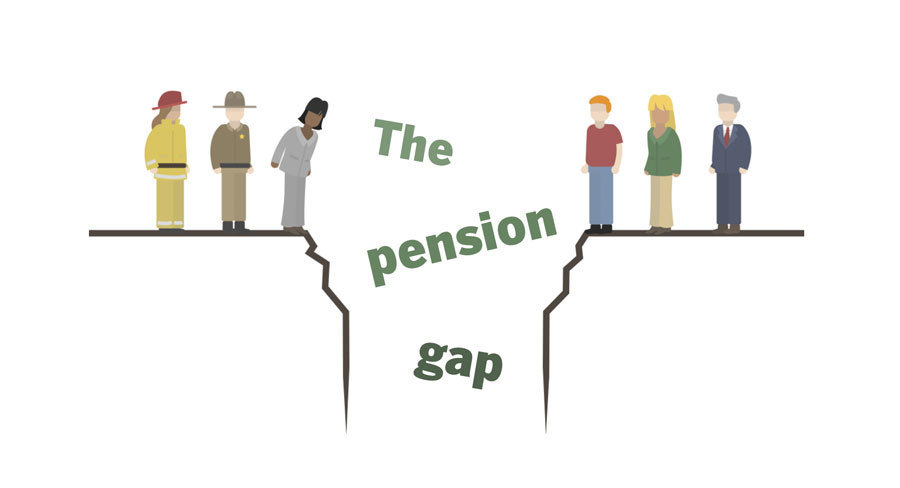California’s pension debt cannot be ignored
By
JOE NATION |
PUBLISHED: September 24, 2019 at 11:22 a.m. | UPDATED: September 24, 2019 at 11:22 a.m.
A decade ago, at Gov. Arnold Schwarzenegger’s request, I supervised a graduate student team that performed a comprehensive analysis of public pensions in California.
The goal was to calculate California’s pension debt, the difference between assets and liabilities.
The team’s conclusions: the unfunded liability was over $500 billion—seven times the number officially reported. That was in 2008.
The student team recommended several actions to lawmakers and pension managers. Almost all were ignored.
Over time, it has become clear that the students’ analysis was spot on. Public pension debt doubled to more than $1.052 trillion in 2017, the last year of complete data.
Based on recently-reported public pension assets and estimated liabilities, that figure is now more than $1.109 trillion, an increase of $56 billion. That translates into $81,300 of pension debt per California household.
There are arguments about whether the students use of what economists would call a “market basis” to measure pension debt is too conservative. In short, a market basis uses accepted economic and finance principles to estimate liabilities.
But even figures reported by California’s pension systems on a more optimist “actuarial” basis produces the same trendline. Debt per household today is almost $22,800, compared with less than $8,000 when students submitted their work in 2010.
What is remarkable about this trend is that pension debt has continued to climb even as the stock market has soared.
The S&P 500 index, about 800 in early 2010, is now over 3,000. And yet over the last decade, public pension funded ratios, measured by assets divided by liabilities, have moved up only slightly.
The funded ratio for California Public Employees’ Retirement System’s Public Employees’ Retirement Fund was 60.8% in 2009. Now, it’s an estimated 72.6%.
This, unfortunately, isn’t the most alarming news.
No one knows if or when a recession will hit the global or U.S. economies, but we are due. Another Great Recession-like downturn in the U.S. stock market could push California’s public pension system assets from $918 billion today to just over $700 billion.
The average funded ratio for all public pensions in California would fall from 75% to 56.4% on an actuarial basis, meaning pensions would have just over 50 cents for every dollar in obligations.
Remember that this is the optimistic scenario.
The average funded ratio on a market basis would fall from 45.7% today to 34.4%, or 34 cents on every dollar owed.
Pension debt would climb from $311 billion today to $543 billion on an actuarial basis. On a market basis, pension debt would climb to $1.341 trillion, or nearly $100,000 per household.
A repeat of the Great Recession may be unlikely, but then again, we didn’t expect a sharp decline in 2008-2009.
Even a mini-recession in which pension systems’ assets fall by one-half Great Recession levels would be a horrible development. Schools and municipal governments, already cutting programs and services despite strong revenues, would be forced to cut even further.
Taxpayers would be asked to chip in more. And public employees, especially those in areas where the economy remains weak, would face layoffs, salary cuts, and in some scenarios, reductions in retirement benefits.
entire article:
Public pension debt will continue to grow. K-12 classroom funds and municipal services will continue to be cut. Legislative attempts at reform barely made a dent in the problem overall.

www.ocregister.com




 www.rawstory.com
www.rawstory.com

www.rawstory.com

californiapolicycenter.org

www.latimes.com
